
Kadisha Valley: Lebanon's Sacred Haven
Discover Kadisha Valley, Lebanon's UNESCO World Heritage site, where ancient monasteries meet stunning landscapes and centuries of spiritual history.
Kadisha Valley, also known as the Holy Valley, is one of Lebanon's most breathtaking natural wonders. Nestled in the heart of the northern mountains, this UNESCO World Heritage Site offers visitors a unique blend of spiritual heritage and awe-inspiring landscapes. The valley is a sanctuary of peace and history, with ancient monasteries and hermitages carved into its cliffs, reflecting centuries of monastic tradition. The valley stretches over 50 kilometers and is dotted with lush forests, cascading waterfalls, and hidden caves. Hiking enthusiasts will find numerous trails that lead to picturesque viewpoints, where they can take in panoramic views of the surrounding mountains and the Mediterranean Sea. The serene atmosphere and untouched beauty of Kadisha Valley make it a must-visit destination for nature lovers and history buffs alike. A trip to Kadisha Valley is incomplete without exploring the historic monasteries, such as the Monastery of Qozhaya, which dates back to the 12th century, and the Monastery of Saint Anthony of Qozhaya, renowned for its ancient library. The valley is also home to the Cedars of God, one of the last remnants of the ancient cedar forests that once covered Lebanon. These majestic trees have stood the test of time and are a symbol of the country's rich natural heritage.
Local tips in Kadisha Valley
- Wear comfortable hiking shoes and bring plenty of water for the trails.
- Visit early in the morning to avoid crowds and enjoy the tranquility.
- Consider hiring a local guide to learn more about the valley's history and hidden gems.
- Check weather conditions before you go, as the trails can be slippery after rain.
- Respect the local customs and dress modestly, especially when visiting religious sites.
Kadisha Valley: Lebanon's Sacred Haven
Kadisha Valley, also known as the Holy Valley, is one of Lebanon's most breathtaking natural wonders. Nestled in the heart of the northern mountains, this UNESCO World Heritage Site offers visitors a unique blend of spiritual heritage and awe-inspiring landscapes. The valley is a sanctuary of peace and history, with ancient monasteries and hermitages carved into its cliffs, reflecting centuries of monastic tradition. The valley stretches over 50 kilometers and is dotted with lush forests, cascading waterfalls, and hidden caves. Hiking enthusiasts will find numerous trails that lead to picturesque viewpoints, where they can take in panoramic views of the surrounding mountains and the Mediterranean Sea. The serene atmosphere and untouched beauty of Kadisha Valley make it a must-visit destination for nature lovers and history buffs alike. A trip to Kadisha Valley is incomplete without exploring the historic monasteries, such as the Monastery of Qozhaya, which dates back to the 12th century, and the Monastery of Saint Anthony of Qozhaya, renowned for its ancient library. The valley is also home to the Cedars of God, one of the last remnants of the ancient cedar forests that once covered Lebanon. These majestic trees have stood the test of time and are a symbol of the country's rich natural heritage.
When is the best time to go to Kadisha Valley?
Iconic landmarks you can’t miss
Cedars of God Bsharri
Discover the enchanting beauty and historical significance of the Cedars of God, a UNESCO World Heritage site in the heart of Lebanon.

دير مار أنطونيوس الكبير قزحيا - الرهبانية اللبنانية المارونية
Discover the spiritual beauty and historical significance of Deir Mar Antonios, a majestic Lebanese monastery perfect for cultural exploration and serenity.

Monastery of Mar Lishaa
Experience the tranquil beauty and spiritual richness of Monastery of Mar Lishaa, a must-visit destination in Lebanon's scenic Bsharri region.

Qadisha
Explore the breathtaking Qadisha Valley, a UNESCO World Heritage site rich in spirituality and stunning natural landscapes in Lebanon.

Qannoubine Valley Bsharri
Discover the tranquil beauty and rich history of Qannoubine Valley in Bsharri, a spiritual haven surrounded by nature's majesty.

Valley qadisha
Explore Valley Qadisha, Lebanon's Grand Canyon, where stunning landscapes meet rich history in a UNESCO World Heritage site.

Saint elias to kadisha valley
Explore the stunning Saint Elias to Kadisha Valley, a UNESCO World Heritage site known for its breathtaking landscapes and ancient monasteries.

Unmissable attractions to see
Zahlan Grotto
Discover Zahlan Grotto, a captivating natural wonder in Syr El Danniyeh, showcasing stunning limestone formations and serene underground landscapes.

Shir El Kef, Mazraaet El Touffah
Explore the tranquil beauty of Shir El Kef, a nature preserve in Mazraaet El Touffah, where lush landscapes and wildlife await your discovery.

Lebanon Escape Team
Discover adventure and breathtaking landscapes at Lebanon Escape Team in Khaldiye, Zgharta—a must-visit for thrill-seeking tourists.

Ehden Blue Cliff
Explore Ehden Blue Cliff, a breathtaking hiking area in Lebanon known for its stunning views, diverse wildlife, and serene hiking trails.

Hiking Beb el hawa
Explore Beb el Hawa in Ehden, Lebanon - a breathtaking hiking area with stunning trails, panoramic views, and the rich beauty of nature waiting to be discovered.
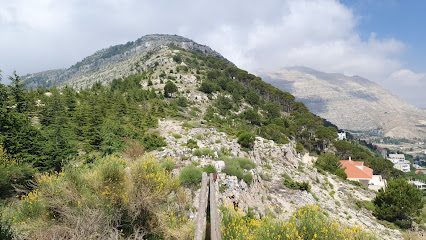
Saint John's Old Monastery
Discover the tranquil beauty and historical significance of Saint John's Old Monastery in Beit Kassab, a serene escape for cultural and spiritual exploration.

Saint elias to kadisha valley
Explore the stunning landscapes of the Saint Elias to Kadisha Valley in Lebanon, a hiker's paradise filled with natural beauty and rich history.

Cosy Corner
Experience the warmth of Lebanese culture at Cosy Corner, a charming tourist attraction in Meghraq offering local delicacies and cozy ambiance.

Horsh Ehden Nature Reserve Ain el Bayad Visitor Center
Explore the breathtaking trails and diverse wildlife of Horsh Ehden Nature Reserve, a premier hiking destination in Lebanon's natural beauty.
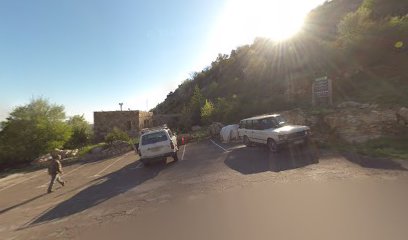
النصب التذكاري للفنان نبيه أبو الحسن
Discover the serenity and cultural significance of the Memorial of Nabi Abu al-Hassan, a hidden gem in the heart of Btekhnay, Lebanon.

Kharfashmun
Discover the serene beauty of Kharfashmun Park, a natural oasis along the Zgharta - Ehden Road, perfect for relaxation and outdoor adventures.

Forêt de Cèdres (Annabelle et Quentin)
Explore the majestic Forêt de Cèdres in Ehden, a serene park filled with ancient cedar trees, diverse wildlife, and breathtaking natural beauty.

نبع الناووس
Experience the serene beauty and rich culture of Nabaa Al-Nawwas, a hidden gem in Lebanon perfect for nature lovers and cultural enthusiasts.

SaydehCedartree
Discover the stunning beauty of ancient cedar trees in Ehden, Lebanon, a perfect destination for hiking and nature lovers.

AD LB
Discover the charm of AD LB in Behouaita, a picturesque tourist attraction showcasing Lebanon's natural beauty and rich cultural heritage.

Essential places to dine
Bab El Hawa
Discover authentic Lebanese cuisine at Bab El Hawa in Ehden—where breathtaking views meet delectable flavors.

Bayt Setti
Discover Bayt Setti in Ehden: A culinary paradise serving exquisite Lebanese dishes amidst stunning landscapes.

Platanus
Discover Platanus in Ehden: Where Traditional Lebanese Cuisine Meets Contemporary Dining Amidst Breathtaking Scenery.

Sama Ehden Park
Experience tranquility at Sama Ehden Park, where nature and delectable dining come together in stunning Lebanese landscapes.

Jalset Al Sayyad - جلسة الصياد
Experience authentic Lebanese cuisine at Jalset Al Sayyad in Ehden—where every dish tells a story and every meal is a celebration.

Restaurant Challita
Discover authentic Lebanese flavors at Restaurant Challita in Hawqa - a must-visit destination for food lovers seeking traditional delights.

Hanin Ehden
Experience authentic Lebanese flavors at Hanin Ehden - where every meal is a celebration of tradition and hospitality.

Ehden Resto Cafe
Discover the best of Lebanese cuisine at Ehden Resto Cafe – where flavor meets tradition in the heart of Ehden.

Escobar Ristorante Ehden
Discover authentic Italian flavors at Escobar Ristorante in Ehden - where exquisite cuisine meets breathtaking views.

Al wadi restaurant
Experience authentic Lebanese cuisine with breathtaking views at Al Wadi Restaurant in beautiful Ehden.

Moonlight
Discover Moonlight in Ehden: A captivating restaurant offering exquisite Lebanese cuisine with breathtaking views.

Le Mortier
Experience authentic Lebanese cuisine at Le Mortier in Ehden - where tradition meets breathtaking mountain views.

Bayt Setti - The Garden
Experience authentic Lebanese cuisine amidst lush gardens at Bayt Setti - The Garden in Ehden.

Al Zaytouni - Qadisha ܒܝܬ ܡܟܘܠܬܐ
Discover the essence of Lebanese cuisine at Al Zaytouni, nestled in Qadisha Valley with breathtaking views and authentic flavors.

Beit El Habayeb Restaurant - Lebanese Cuisine
Experience authentic Lebanese flavors at Beit El Habayeb Restaurant in Hawqa – a culinary haven for food lovers seeking traditional delights.

Markets, malls and hidden boutiques
Kadisha
Explore Kadisha, the vibrant supermarket in Bohssas, offering a unique glimpse into Lebanese culture through local products and flavors.

Kadisha Valley
Experience the breathtaking beauty and rich heritage of Kadisha Valley, a UNESCO World Heritage site in Lebanon, perfect for nature lovers and history buffs.

Easy Shop
Explore Easy Shop in Ehden for a delightful supermarket experience featuring local produce, international goods, and a taste of Lebanese culture.

Patisserie Angela
Discover the exquisite flavors of Patisserie Angela in Ehden, where traditional Lebanese sweets meet modern pastry artistry.

5ouza3balat
Explore the vibrant gift shop 5ouza3balat in Tripoli, where local crafts and unique souvenirs come together in a charming shopping experience.

oddfish concept store
Explore The Oddfish Concept Store in Beirut for unique gifts, art, and fashion, reflecting the essence of Lebanese creativity and culture.

Nehme - Pharmacy
Discover Nehme Pharmacy in Ehden, your trusted source for health essentials and expert advice while exploring this beautiful Lebanese town.

Molino Café
Discover the inviting atmosphere and exquisite coffee at Molino Café in the heart of Old Town Ehden.

Lavender shop
Explore the Lavender Shop in Hazerta for an aromatic journey through exquisite lavender products and delightful fragrances.

Milad Gitany Dollar Shop
Explore Milad Gitany Dollar Shop in Ehden for unbeatable prices on a variety of everyday items and unique souvenirs.

Premium Liquors and Cigars - Ehden
Explore the finest selection of premium liquors and cigars in Ehden, Lebanon, a perfect stop for enthusiasts and casual shoppers alike.

Richy Group
Explore the latest fashion trends at Richy Group, a premier clothing store in الموغامبو, where style meets exceptional service.

ABZ_CELL
Explore the cutting-edge mobile technology at ABZ_CELL in Ehden, Lebanon, where your connectivity meets innovation.

Orquidea Boutique
Explore the exquisite Orquidea Boutique in Deir Zahrane, where local fashion meets contemporary style in a charming shopping experience.

Dark Night
Explore Dark Night, Dubai's premier perfume store, offering a rich selection of exquisite fragrances that embody elegance and sophistication.

Essential bars & hidden hideouts
BarVu
Experience vibrant nightlife at BarVu in Ehden, where exquisite drinks and a lively atmosphere await every visitor.
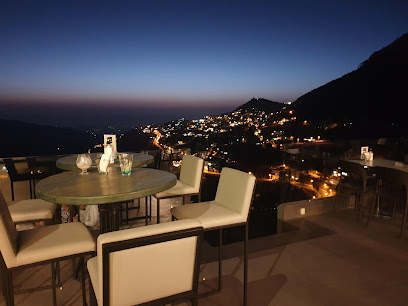
Haze Sunset Bar
Discover unforgettable sunsets and a tranquil atmosphere at Haze Sunset Bar in Ehden, Lebanon—your perfect escape for relaxation and scenic views.

Minus Pub
Discover the lively nightlife at Minus Pub in Ehden, where fantastic drinks and friendly locals create an unforgettable experience.
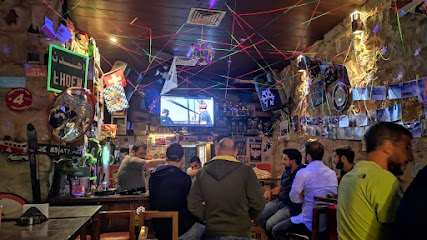
Vee Lounge
Experience the lively ambiance and exquisite drinks at Vee Lounge in Ehden, Lebanon – the perfect retreat for relaxation and entertainment.

fruitbar
Discover the lively ambiance of Fruitbar in Bsharri, where great drinks and unforgettable nights await you.

Bhava
Experience the vibrant nightlife at Bhava in Ehden, where lively ambiance meets refreshing drinks and local culture.

Loui’s Bar
Experience the vibrant nightlife of Ehden at Loui’s Bar, where good drinks and great company await in a cozy atmosphere.

Muse bar
Discover the vibrant ambiance of Muse Bar in Bsharri, where locals and tourists unite for memorable nights filled with drinks and entertainment.

Le Bro
Discover the vibrant nightlife at Le Bro, a must-visit bar in Ehden offering a delightful selection of local and international drinks.

Enchanted - Lounge Bar
Experience a cozy atmosphere, exquisite cocktails, and breathtaking views at Ehden's Enchanted Lounge Bar, a perfect evening retreat.
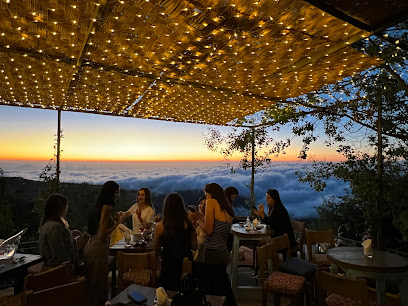
3arch pub
Experience the vibrant atmosphere of 3arch Pub in Kfarsghab, where local flavors and friendly vibes come together for an unforgettable night out.

مسمكة آل تادروس ما عدا ريمون
Experience the vibrant nightlife of Bane at Masmaka Al Tadros, where exquisite drinks and lively ambiance create unforgettable evenings.

Cloud 9
Experience the vibrant nightlife and breathtaking mountain views at Cloud 9, the ultimate bar destination in Ehden, Lebanon.

Chamoun gaming lounge/bar
Experience the vibrant nightlife at Chamoun Gaming Lounge & Bar in Aabdine, where gaming meets relaxation and delicious drinks await.
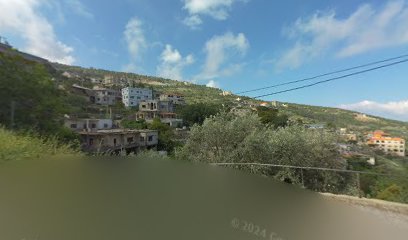
Names Ehden PUB
Immerse yourself in the vibrant atmosphere of Names Ehden PUB, where local flavors and refreshing drinks await in the heart of scenic Ehden.

Local Phrases about Kadisha Valley
-
- Helloمرحبا
[Marhaba] - Goodbyeوداعا
[Wada'an] - Yesنعم
[Naam] - Noلا
[La] - Please/You're welcomeمن فضلك / على الرحب والسعة
[Min fadlak / Ala al-rahb was-sa'ah] - Thank youشكرا
[Shukran] - Excuse me/Sorryعذرا
[A'athir] - How are you?كيف حالك؟
[Kayf halak?] - Fine. And you?بخير. وأنت؟
[Bikhayr. Wa anta?] - Do you speak English?هل تتحدث الإنجليزية؟
[Hal tatahadath al-Inglizia?] - I don't understandلا أفهم
[La afham]
- Helloمرحبا
-
- I'd like to see the menu, pleaseأود أن أرى القائمة، من فضلك
[Awwad an ara al-qa'ima, min fadlak] - I don't eat meatأنا لا آكل اللحم
[Ana la aakol al-lahm] - Cheers!صحتين!
[Sahhtayn!] - I would like to pay, pleaseأود أن أدفع، من فضلك
[Awwad an adfa', min fadlak]
- I'd like to see the menu, pleaseأود أن أرى القائمة، من فضلك
-
- Help!مساعدة!
[Musa'adah!] - Go away!انصرف!
[Ansuraf!] - Call the Police!اتصل بالشرطة!
[Itsal bil-shurta!] - Call a doctor!اتصل بالطبيب!
[Itsal bil-tabib!] - I'm lostلقد ضللت الطريق
[Lakad dalalt at-tariq] - I'm illأنا مريض
[Ana mareed]
- Help!مساعدة!
-
- I'd like to buy...أريد أن أشتري...
[Areed an ashtari...] - I'm just lookingأنا فقط أتفرج
[Ana faqat atfarij] - How much is it?بكم هذا؟
[Bikam hadha?] - That's too expensiveهذا غالي جدا
[Hadha ghali jiddan] - Can you lower the price?هل يمكنك تخفيض السعر؟
[Hal yumkinuk takhfez as-sa'r?]
- I'd like to buy...أريد أن أشتري...
-
- What time is it?كم الساعة؟
[Kam as-sa'ah?] - It's one o'clockالساعة الواحدة
[As-sa'ah al-wahida] - Half past (10)النصف بعد العاشرة
[An-nisf ba'd al-'ashirah] - Morningصباح
[Sabaah] - Afternoonمساء
[Masaa] - Eveningمساء
[Masaa] - Yesterdayأمس
[Ams] - Todayاليوم
[Al-yawm] - Tomorrowغدا
[Ghadan] - 1واحد
[Wahed] - 2اثنان
[Ithnan] - 3ثلاثة
[Thalatha] - 4أربعة
[Arba'a] - 5خمسة
[Khamsa] - 6ستة
[Sitta] - 7سبعة
[Saba'a] - 8ثمانية
[Thamania] - 9تسعة
[Tasia] - 10عشرة
[Ashara]
- What time is it?كم الساعة؟
-
- Where's a/the...?أين...
[Ayna...] - What's the address?ما هو العنوان؟
[Ma huwa al-anaan?] - Can you show me (on the map)?هل يمكنك أن تريني (على الخريطة)؟
[Hal yumkinuk an tureeni (ala al-khartah)?] - When's the next (bus)?متى الحافلة القادمة؟
[Mata al-Haflah al-qadimah?] - A ticket (to ....)تذكرة (إلى...)
[Tazkirah (ila...)]
- Where's a/the...?أين...
History of Kadisha Valley
-
Kadisha Valley, known as the Holy Valley, has been inhabited since the Paleolithic period. The earliest settlers were likely hunter-gatherers who found shelter in the valley's numerous caves. Over time, the valley became a haven for various ancient civilizations, including the Phoenicians, who left behind significant archaeological artifacts.
-
In the early centuries of Christianity, Kadisha Valley became a crucial center for monasticism. By the 4th century, Christian hermits and monks began to seek refuge in the valley's remote caves. The Maronite community, in particular, established a strong presence here. The Maronite monks built monasteries such as the Monastery of Qozhaya and the Monastery of Mar Elisha, which played a pivotal role in the religious and cultural life of the region.
-
During the Ottoman Empire's rule over Lebanon from the 16th to the early 20th centuries, Kadisha Valley became a sanctuary for those fleeing religious persecution. The Maronites and other Christian communities found refuge in the valley, preserving their traditions and religious practices. The rugged terrain and the valley's natural fortifications provided a safe haven from the reach of Ottoman authorities.
-
Kadisha Valley is not only significant for its religious history but also its cultural and literary contributions. The valley is home to numerous manuscripts and texts that have been preserved in its monasteries. These texts include religious manuscripts, historical documents, and literary works that offer insights into the region's rich cultural heritage. The Monastery of Saint Anthony of Qozhaya, in particular, is known for its library, which houses an extensive collection of ancient texts.
-
In 1998, Kadisha Valley, along with the nearby Forest of the Cedars of God, was designated a UNESCO World Heritage Site. This recognition highlights the valley's historical, cultural, and natural significance. Today, Kadisha Valley continues to be a place of pilgrimage and tourism, attracting visitors from around the world who come to explore its monasteries, hike its trails, and immerse themselves in its serene beauty.
Kadisha Valley Essentials
-
Kadisha Valley, located in northern Lebanon, is accessible from Beirut, the capital city. The closest major airport is Beirut-Rafic Hariri International Airport. From Beirut, you can take a taxi or a private car to Kadisha Valley, which is approximately a 2 to 3-hour drive, depending on traffic. Public transportation options include buses and minibuses (known as 'service' taxis) that run from Beirut to Tripoli, and from there, you can take a local taxi to the valley.
-
Once in Kadisha Valley, transportation options are limited mainly to taxis and private cars. The terrain is rugged, so renting a 4x4 vehicle is advisable for exploring the area. Walking is another viable option for shorter distances and for visiting nearby monasteries and sites. Local buses are infrequent and may not cover all the tourist spots, so plan accordingly.
-
The official currency in Lebanon is the Lebanese Pound (LBP), also known as the Lira. However, U.S. dollars are widely accepted. Credit cards are accepted in some hotels, restaurants, and shops, but it is advisable to carry cash, especially in smaller establishments and rural areas. ATMs are available in nearby towns like Bcharre and Ehden, but it's wise to withdraw sufficient cash before heading into the valley.
-
Kadisha Valley is generally safe for tourists, but it's always best to take standard precautions. Avoid walking alone at night in isolated areas and keep an eye on your belongings in crowded places. There are no specific high-crime areas targeting tourists in the valley, but staying vigilant is recommended. Always let someone know your travel plans, especially if you plan to hike or explore remote areas.
-
In case of emergency, dial 112 for police assistance. Medical facilities are available in nearby towns like Bcharre and Ehden. It is highly recommended to have travel insurance that covers medical emergencies. For minor health issues, there are pharmacies in the nearby towns where you can purchase over-the-counter medications. Always carry a basic first aid kit, especially if you plan to hike.
-
Fashion: Do dress modestly, especially when visiting religious sites. Avoid wearing revealing clothing. Religion: Do respect local customs and traditions. Always cover your head when entering churches and monasteries. Public Transport: Do be respectful and give up your seat to elderly passengers. Don't eat or drink on public transport. Greetings: Do greet people with a handshake and a friendly smile. Eating & Drinking: Do try local delicacies and accept food offerings graciously. Don't refuse hospitality, as it is considered impolite.
-
To experience Kadisha Valley like a local, visit the local markets in nearby towns such as Bcharre, where you can buy fresh produce and traditional Lebanese goods. Engage with locals, as they are often friendly and willing to share stories about the valley's history and culture. Don't miss visiting the ancient monasteries, including the Monastery of Qozhaya and the Monastery of Mar Lishaa. Hiking the trails between the monasteries offers a unique and breathtaking experience of the valley's natural beauty.
Nearby Cities to Kadisha Valley
-
Things To Do in Batroun
-
Things To Do in Byblos
-
Things To Do in Baalbek
-
Things To Do in Jounieh
-
Things To Do in Zahle
-
Things To Do in Broummana
-
Things To Do in Beirut
-
Things To Do in Anjar
-
Things To Do in Aley
-
Things To Do in Deir el Qamar
-
Things To Do in Rashaya
-
Things To Do in Sidon
-
Things To Do in Marjayoun
-
Things To Do in Tyre
-
Things To Do in Safed










